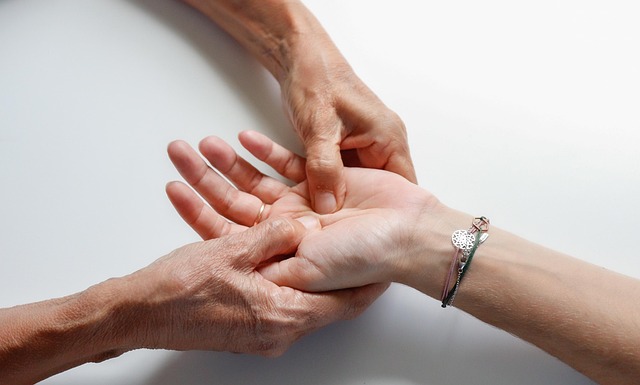Skin tags, soft growths appearing as small lumps on the skin, are caused by excess skin or friction and can be removed surgically or non-surgically. Surgical removal requires a qualified dermatologist or surgeon with expertise in dermatological procedures, proper aftercare to prevent recurrence, and understanding scarring risks. Non-surgical methods like cryosurgery or laser treatment offer minimal invasiveness and quick recovery times. Consulting with a healthcare professional is crucial for selecting the most suitable removal technique based on size, location, and number of skin tags.
“Curious about safely removing large skin tags? This comprehensive guide explores effective techniques, empowering you to make informed decisions. We delve into understanding skin tags—their causes and types—and present a range of non-surgical methods. For those considering surgical removal, we break down the step-by-step process, highlighting best practices. Learn about choosing the right healthcare provider and what to expect during recovery. Additionally, discover prevention tips for long-term results, focusing on surgical skin tag removal technique for precise, safe outcomes.”
- Understanding Skin Tags: Causes and Types
- Non-Surgical Removal Methods Explained
- Surgical Skin Tag Removal Technique: Step-by-Step
- Choosing the Right Healthcare Provider for Surgery
- Recovery and Aftercare: What to Expect
- Preventing Recurrence: Tips for Long-Term Results
Understanding Skin Tags: Causes and Types

Skin tags, medically known as acrochordons, are small, soft lumps or growths that appear on the skin. They are typically harmless but can be a source of concern for many individuals due to their appearance. These tags are usually connected to the skin by a thin stalk and vary in size, from just a few millimetres to several centimetres. While they commonly occur on the neck, they can show up anywhere on the body, including the armpits, groin area, and even hands and feet.
Caused by excess skin or friction, skin tags are more prevalent in certain individuals due to genetic factors. They often run in families, suggesting a strong hereditary component. Moreover, conditions like diabetes or obesity can increase the likelihood of developing these growths. Different types include skin tag clusters, single tags, and those that form on body folds, each requiring potentially different surgical skin tag removal techniques. Understanding the causes and types is crucial when considering the most suitable method for safe removal, especially compared to more invasive procedures offered by nottingham skin tag clinics or alternative options like removal in gillingham.
Non-Surgical Removal Methods Explained

Many people opt for non-surgical removal methods when dealing with large skin tags due to their minimal invasiveness and relatively quick recovery times. These techniques offer an alternative to traditional surgical skin tag removal, which can be more expensive and involve a longer healing process. One common approach is using liquid nitrogen, also known as cryosurgery, where a small amount of the freezing agent is applied to the skin tag, causing it to crumble and fall off over time. Another method involves laser treatment, which targets the blood vessels supplying the tag, leading to its removal.
For those seeking private and discreet procedures, options like lancing or cutting are available at specialist clinics in areas such as Maidstone, Southend-on-Sea, and London. These methods involve physically removing the skin tag with a sterile instrument or small scalpel, respectively. While effective, they may leave scars and require more downtime for healing compared to non-surgical alternatives. It’s essential to consult with a qualified healthcare professional to determine the most suitable removal technique based on the size, location, and number of skin tags.
Surgical Skin Tag Removal Technique: Step-by-Step

Surgical Skin Tag Removal Technique: Step-by-Step
1. Consultation and Anesthesia: Begin by finding a clinical trial for experimental skin tag removal treatments or visiting a specialist like the Salford Skin Tag Clinic. During this phase, a thorough examination of the skin tags will be conducted to determine their size, number, and location. Local anesthesia is then administered to minimize discomfort during the procedure.
2. Surgical Excision: Using sterile instruments, the surgeon carefully incises the skin tag at its base. This precise cut ensures that the entire tag is removed while minimizing damage to surrounding skin. The procedure is usually quick, taking only a few minutes to complete. Is there any downtime associated with skin tag surgery? While there may be some mild redness and swelling immediately after, these typically subside within a few days with proper care.
Choosing the Right Healthcare Provider for Surgery

When considering surgical skin tag removal as a surgical skin tag removal technique, it’s paramount to choose the right healthcare provider. Look for a qualified and experienced dermatologist or surgeon who specialises in dermatological procedures. In areas like Bristol, Wakefield, and other urban centres, numerous private skin tag removal clinics offer these services, ensuring you receive expert care in a comfortable setting.
Reputation and patient feedback are crucial indicators of quality care. Research the clinic’s credentials, ask about their surgical techniques, and understand the potential risks and recovery times. Ensure they provide comprehensive aftercare instructions to aid your healing process and minimise the chances of skin tags regrowing, addressing concerns like can skin tags grow back after surgical removal.
Recovery and Aftercare: What to Expect

After undergoing any surgical skin tag removal technique, including those offered at professional clinics like those in Rotherham and Bristol, it’s normal to experience some level of discomfort and redness during the initial recovery phase. Swelling is also common, especially around the area where the skin tag was removed. Patients can typically expect these symptoms to subside within a few days to a week. It’s crucial to follow the aftercare instructions provided by your healthcare professional for optimal healing.
During this period, keeping the treated area clean and dry is essential. Avoid scratching or touching the site gently, and steer clear of any strenuous activities that might disrupt the healing process. Using a soft, sterile bandage as recommended by your doctor can aid in protecting the skin and promoting faster healing, which usually takes around 1-2 weeks. In some cases, scabs may form, but they will naturally fall off, revealing healthy new skin. How long does it take to heal from skin tag removal? It varies from person to person, but with proper care, most individuals can expect a complete recovery within this timeframe.
Preventing Recurrence: Tips for Long-Term Results

After successfully removing a large skin tag using a surgical technique like cryosurgery or ligation, preventing recurrence is key to achieving long-term results. It’s important to maintain regular check-ups with your dermatologist or healthcare provider who can monitor any changes in the treated area. Additionally, keeping the skin clean and avoiding excessive scratching or irritation can help reduce the chances of regrowth.
For those considering private skin tag removal southend-on-sea or in London, understanding potential scarring risks is essential. While modern surgical techniques are generally safe, should I be concerned about scarring from skin tag surgery? It’s crucial to discuss these concerns with a qualified professional who can offer tailored advice based on your specific condition and preferences.
When considering safe removal techniques for large skin tags, it’s clear that both non-surgical and surgical methods have their merits. While non-surgical options offer a less invasive approach, surgical skin tag removal technique provides more permanent results. By understanding the causes and types of skin tags, choosing the right healthcare provider, and following proper recovery and aftercare guidelines, you can select the best option for your needs. Remember, preventing recurrence through long-term care is key to maintaining clear, smooth skin. In terms of surgical skin tag removal technique, with the right professional guidance, it can be a game changer for achieving lasting freedom from these unsightly growths.
